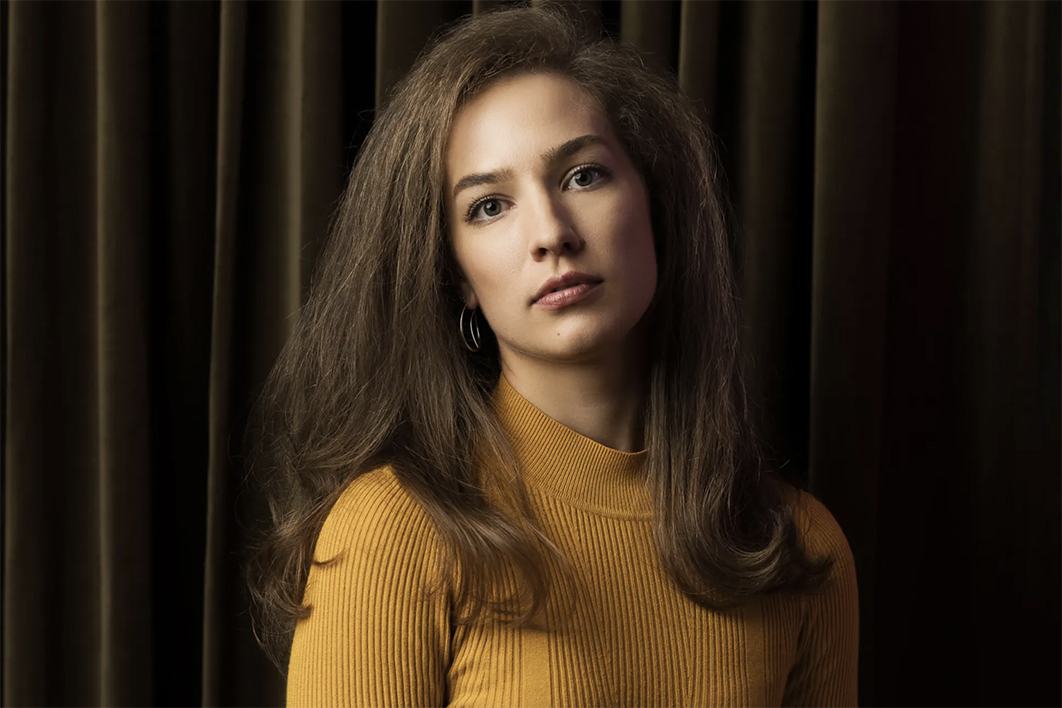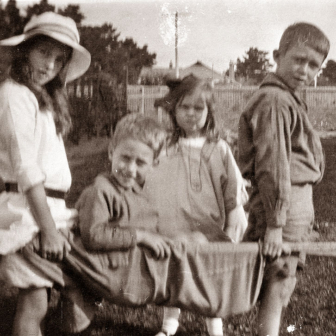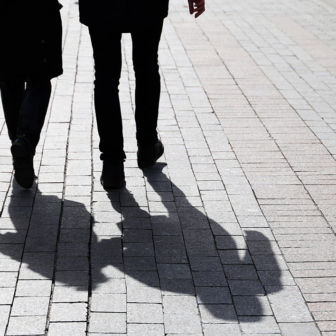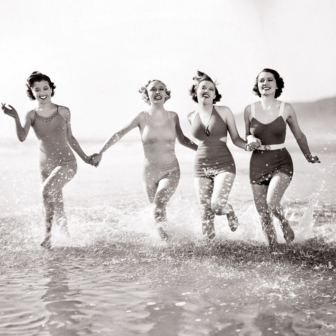If you went to school in the 1980s or 90s then sex education was probably bewildering, mortifying or even frightful. Mine began with the plump, ruddy-cheeked, sexually rambunctious couple from Peter Mayle’s Where Did I Come From? who loved each other so much they needed to get as close to each other as possible in a wooden bed with a 1970s patchwork quilt after which (turn the page) a baby was born. Disgusting, I remember thinking while I eyed my parents with scorn.
At my Catholic high school our science teacher drew images of fallopian tubes that looked like languid tropical flowers and sperm resembling frisky tadpoles. He said the words penis and vagina, the class erupted in giggles, and he muttered darkly about HIV and AIDS. Of course, I already knew about AIDS from the endless advertisements showing the Grim Reaper knocking down innocents in a bowling alley.
In short, sex education for my generation was not only seriously confusing and terrifying, it was also monolithically heterosexual, innocent of pleasure outside procreation and ignorant of violence, and only referenced queer sexuality to note the dangers attached.
Cut to 2019 and author Katrina Marson meets primary schoolchildren in Shropshire walking towards each other and learning to say when physical proximity makes them uncomfortable, children in the Netherlands touching feathers, sponges and other materials and expressing how these physical sensations make them feel, children in Yorkshire being shown slides of two girls hugging with the caption “Sometimes two girls will grow up to be women and love each other and that’s called lesbian,” and high-school students in Australia demanding better relationships and sexuality education to prevent sexual assault.
In her new book Legitimate Sexpectations Marson argues that a direct line exists between inadequate sex education and sexual assault. Encouraging children to be literate about their feelings, teaching them they are entitled to pleasure, and showing them how to inquire about, listen to and respect the emotions of their peers is, she says, crucial to their understanding of consent and to their sexual wellbeing as a whole.
Marson joins a panoply of feminist theorists in arguing that consent is a low threshold for sexual autonomy. What children need — and what they are entitled to as a matter of health, safety and human rights — is full sexual citizenship. Judged against this standard, Australian students are woefully disenfranchised. If we are serious about reducing rates of sexual violence in Australia, she says, then we need to begin not with the criminal justice system, which is little more than an “ambulance at the bottom of a cliff,” but with holistic sexual education. We need prevention and pleasure, not simply responses to coercion and crimes.
Marson’s book is ultimately an argument in favour of comprehensive sex education, but her background as a criminal prosecutor lends a fascinating dual perspective to her work, bringing courtroom and classroom into dialogue with each other. Tired of the grim “conveyor belt” that was dropping sexual assault files on to her desk each day, she set out in 2019 to investigate what could be done to stop the damage.
To do that, she revisited an argument she originally made in her honours thesis: that sex education was more effective than law in preventing sexual violence. Then, courtesy of a Churchill Fellowship, she met with teachers, sex-ed experts, researchers and public policymakers involved in innovative relationships and sexuality education programs in Europe, the United Kingdom and North America.
Part memoir, part fiction, part policy paper and part chat with a friend over cocktails, her book makes a compelling argument for Australian parents, schools and governments to adopt a form of sex education for children that goes beyond “don’t get raped” to teach children critical sexual literacy.
Each of Marson’s nine chapters begins with a fictional vignette taken from real situations she has encountered in her work. With ten years’ experience in the criminal justice system, she has an intimate understanding of sexual harms in their most banal and brutal forms, and of the inadequacy of law to redress them. She explains the violence underpinning what might once have been seen as a fumbling in a car or an unwanted romantic encounter at a party by imagining the internal monologues of each person: whether they believed they were entitled to pleasure, what their definitions of consent were, and the social scripts they had been given about masculinity and femininity or about heterosexuality and homosexuality. She showcases a vast spectrum of sexual harms, from cases where consent is clearly lacking to sex that may have been consensual but was ultimately unwanted, a product of social pressure.
I imagine most readers will find these vignettes uncomfortable reading, less because of the anatomical detail with which they are narrated than because of their familiarity. What for so many generations was passed off as bad sex reflects gendered asymmetries of power embedded in scripts about what sex should look like. From cinematic sex scenes entirely oblivious to the clitoris, to reality television shows where women worry more about how they are seen than how they feel, to compulsory heterosexuality, to parents telling a daughter to pull her skirt down or smiling that “boys will be boys,” we learn bad sex in a lot of places.
But what has been learned, Marson argues, can also be unlearned. The need for better communication — mutuality, literacy in knowing and expressing your own feelings and asking about and listening to your partner’s desires — runs through every story, as does the need to challenge binary notions of gender. Australian young people need critical literacy in sexuality that is best offered through relationships and sexuality education.
This is much more than sex education as most of us knew it. At its most comprehensive, it is a form of pedagogy that “aims to provide adolescents with knowledge, skills, attitudes and values.” It views sexuality “in a holistic manner, as an integral part of adolescents’ emotional and social development.” It dispenses with humanistic myths of childhood innocence and embraces young people’s right to sexual knowledge as a human and civil right that ensures sexual safety and wellbeing. It is also one of the most highly politicised and controversial areas of any national educational curriculum.
Remember Scott Morrison saying that a sex-ed program in Victoria made his “skin curl” or the furore that erupted around Safe Schools, an anti-bullying program designed to make schools inclusive for queer kids? At their heart, these moral panics reflect paternalistic notions that children, if given sexual knowledge, will indiscriminately leap on each other with lascivious intent. Like Adam and Eve eating the apple of knowledge, they will be cast out of the garden of childhood innocence, forever sinners, forever corrupted.
This reflects, at least partly, the role school plays in socialisation. Because it is the place where future citizens are moulded and shaped, the nation and the public have a stake in pedagogy, and any recognition of queer sexuality is immediately seen (in conservative columnist Miranda Devine’s words) as a “sexual indoctrination program.” It is why sex education has tended to envisage heterosexual, cis-gendered, married couples as the ideal.
Although data suggests that most parents are in favour of comprehensive sex education that includes recognition of sexual diversity, Australian schools are vulnerable to pressure from conservative and religious minorities because there is no national regulated standard of sex education, unlike in some European countries. Every Australian school in every state has the autonomy to determine sex-education content and delivery, with wildly varying standards of teaching.
Public schools have the additional problem of being vulnerable to the funding whims of governments at state and federal level. Marson contrasts this with Germany, where the Federal Centre for Health Education employs “qualified experts to conduct research, develop teaching packages and online platforms.” This government body then works with the education department in each state to deliver top-quality, standardised and well-resourced modules.
Unlike Australia, where sex-ed programs are framed in negative terms around risks of pregnancy, disease or sexual violence, German sex education is framed in positive terms. As Marson puts it, “They recognise the harm that comes from… failing to set a standard of holistic sexual wellbeing, from failing to paint a picture of what that looks like and what young people should expect: a picture of joy, fun, fulfilment and connection.” Germans start from this baseline and include violence prevention as a supplement. It’s a form of sex education that works with an affirmative model of consent, where consent is based less on a simple yes or no and more on ideas of pleasure and intimacy, where, as Marson puts it, “everyone present is really into it, wants to be there and is getting a lot out of the experience.”
It is the institutionalisation of sex education — as a matter of public policy rather than private values — that explains the title of the book. It’s a play on the administrative law notion of legitimate expectations, under which citizens can hold government to account for certain promises. If we promise children a life free of sexual violence then, as a community, we need to be responsible for funding and developing sex education. Reared in a culture of prudery, most teachers and parents are ill-equipped for the task. We need specialised teachers or qualified professionals if we are not to let our children down on this promise.
While I agree wholeheartedly with Marson’s linking of the institutional with the intimate, there is a certain paternalism to her tone throughout the book. “If anyone is at fault, it is us. As the village that raises you, we have let you down,” she self-lacerates. The rhetoric reflects a top-down model of sex education and is premised on an exaltation of childhood innocence. (We sexually literate adults need to teach you sexually innocent young people.)
Unlike scholarly literature in the field, particularly that of Kerry Robinson and Bronwyn Davies, Marson doesn’t address the myth of childhood innocence that underpins the moral panics around sex education, and in one instance claims that better education “protects” their innocence. This is not just a missed opportunity to examine the class- and race-based nature of a myth that emerged with the privatisation of the Christian middle-class home in the nineteenth century — excluding working-class and non-white children, who were seen as too sexually knowledgeable to be considered real children. It also explains why no young people were interviewed for the book.
At the level of policy, there is significant research, as Marson notes, that suggests the most effective sex education programs are those written alongside young people or indeed conducted by them. And given that adults are not particularly literate in the various forms of social media that are teaching adolescents about sex, it seems odd not to have included their voices and perspectives.
Equally troubling is the omission of any non-white interviewees. While I can accept that Marson decided to focus on North America and Europe, where the education systems are similar to Australia’s, I am baffled by why she would not have interviewed people of colour in the countries she visited, many of which are just as multicultural as Australia. Notions of childhood and sexuality differ across cultures and, as Marson herself notes, “shame around sex and sexuality… are colonial and patriarchal concepts.”
Marson confesses to this deficiency, which I think hints at the broader problem with books written as a “research journey.” As memoir, they can fall short of scholarly standards because the genre is personalised, intimate, vulnerable and confessional. Rather than organising more interviews to redress the problem, Marson simply admits her sin — “my research is the poorer for it” — and carries on. It’s not just a problem in terms of the book’s findings, but also makes me worry about the kinds of books currently being churned out in Australia, where sloppy research passes under the cloak of personal epiphany.
These reservations aside, Marson has written an important book that you will want to thrust into the hands of every parent and educator you know. It is a significant intervention into a field overly dominated by legal perspectives, and I have no doubt that comprehensive relationships and sex education can do far more to prevent sexual violence than changing the legal standard of consent. More than this, it will help raise a generation for which violence, disease or pregnancy is not the prompt for sex education but rather an essential element of a conversation about pleasure, intimacy, fun and desire. •
Legitimate Sexpectations: The Power of Sex-Ed
By Katrina Marson | Scribe | $32.99 | 258 pages




